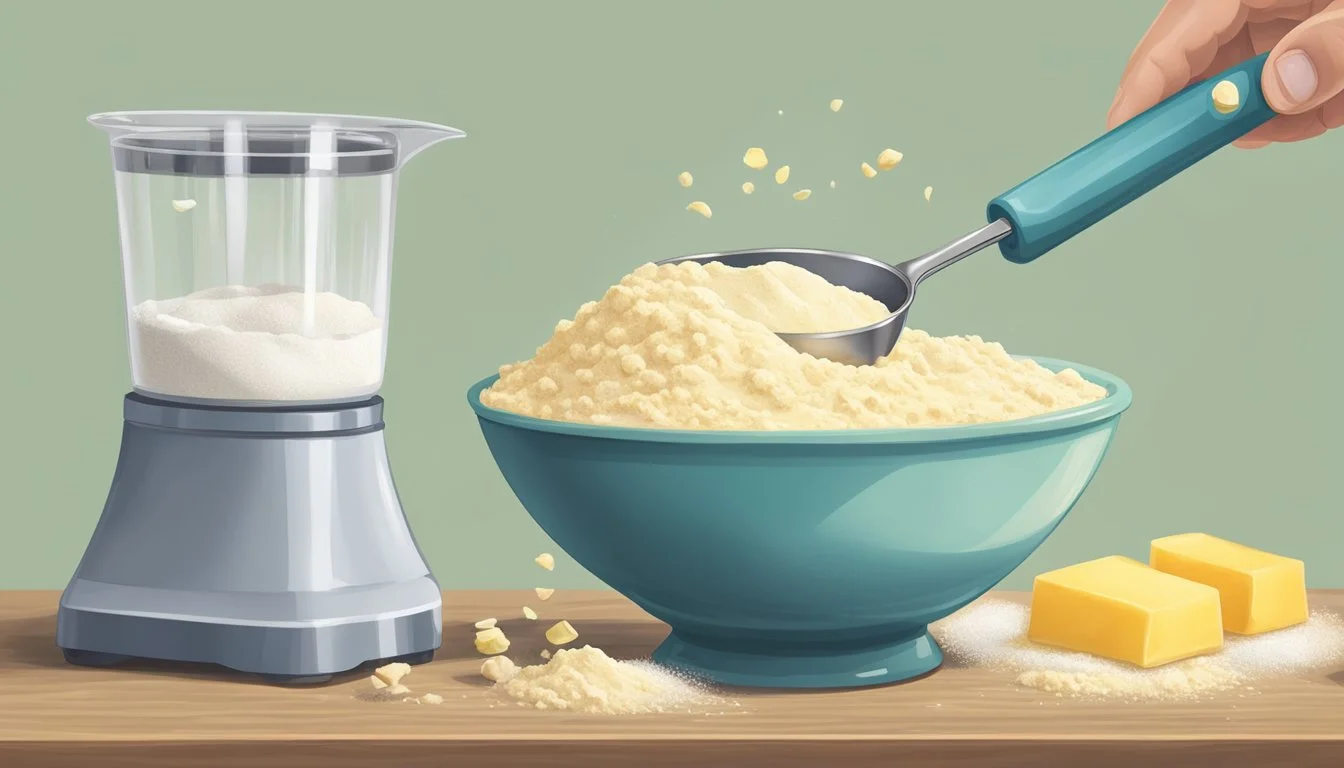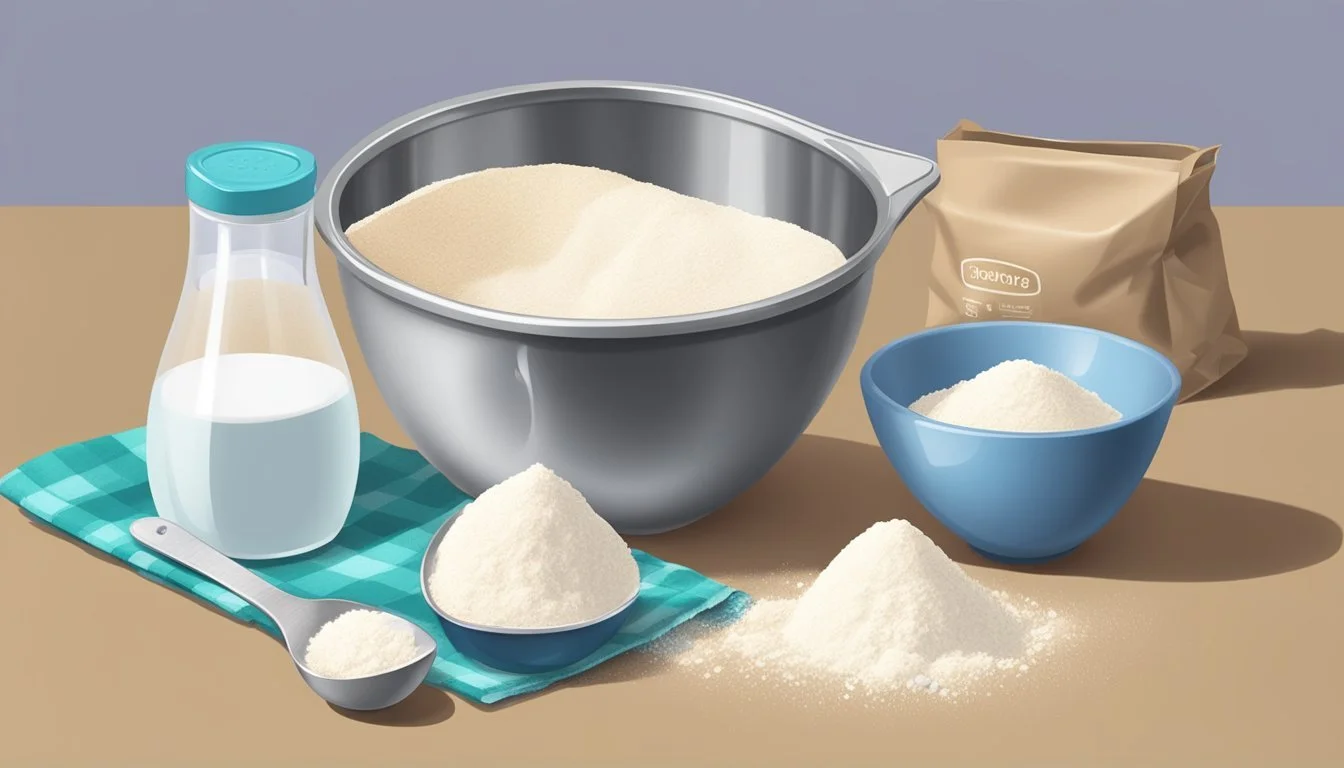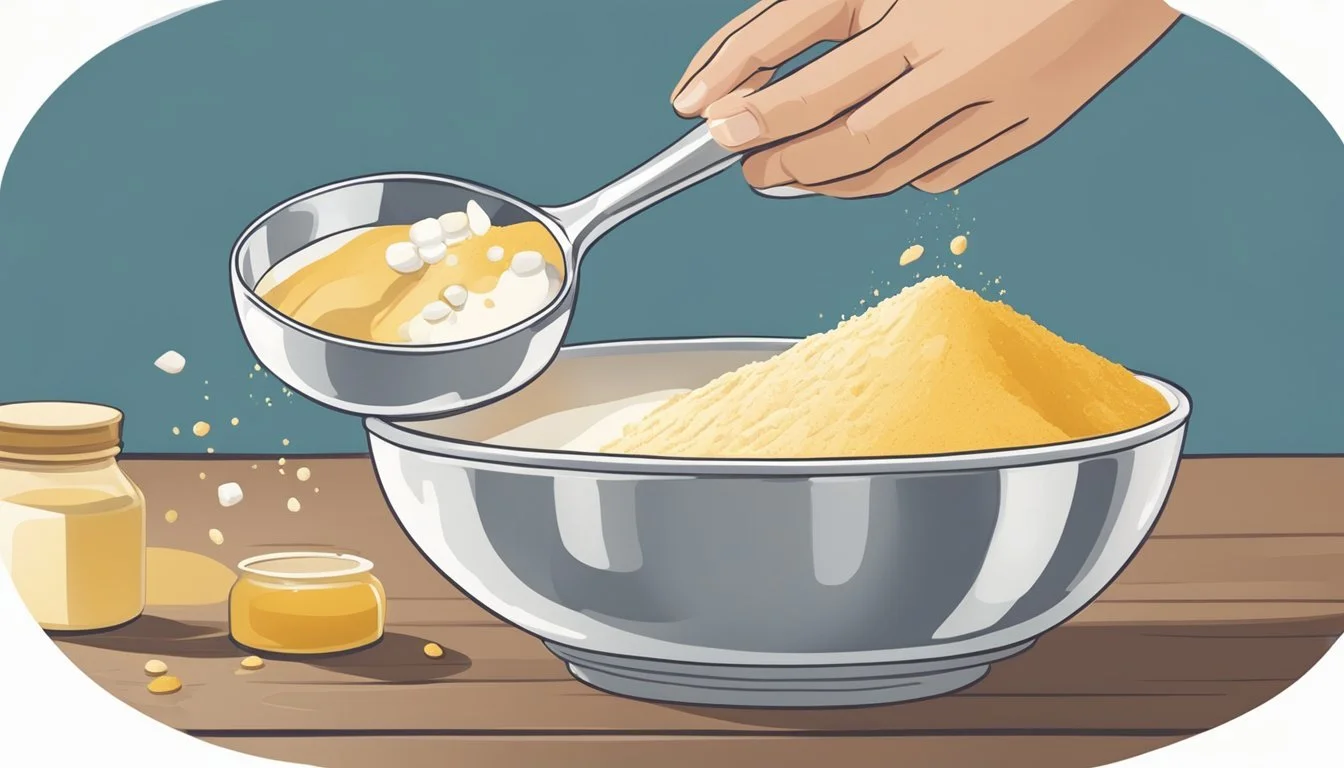How to Measure Ingredients for a Homemade Biscuit Recipe
Precise Techniques for Perfect Results
Creating homemade biscuits from scratch is a rewarding experience that combines the comforts of traditional baking with the satisfaction of producing something delicious with one's own hands. Biscuits, a staple in many cultures, are often considered the epitome of comfort food, offering a warm, buttery treat that pairs well with a variety of meals or stands alone as a delightful snack. Precise measurement of ingredients is critical in baking, especially for biscuits, as the balance between flour, leavening agents, fat, and liquids directly influences the texture, taste, and rise of the final product.
Measuring ingredients accurately ensures that the delicate structure of biscuits is maintained, giving them their characteristic flaky layers and lightness. Too much flour can result in hard biscuits, while too little may cause them to be too flat or crumbly. Leavening agents, such as baking powder, work with the acidity in buttermilk or the technique of folding dough to create the rise and airy texture biscuits are known for.
One must approach the process of measuring with both respect for the ratios and an understanding of the role each ingredient plays. This knowledge allows bakers to replicate and even enhance traditional biscuit recipes, guaranteeing success in the kitchen. Careful attention to detail in measuring dry and wet ingredients can make the difference between an ordinary baked good and a homemade biscuit that is both comforting and a source of pride for any baker.
Understanding Biscuit Ingredients
Crafting a perfect homemade biscuit recipe requires precision in measuring and a good understanding of how each component contributes to the final product. The right ingredients combined in the correct proportions ensure a desirable texture, flavor, and appearance.
Flour Dynamics
Flour is the foundation of any biscuit recipe. All-purpose flour is commonly used because it provides enough gluten to create a tender yet structured biscuit. For those needing gluten-free options, blends of flours and starches are essential to mimic the properties of wheat flour. Self-rising flour can be used for convenience since it already contains leavening agents and salt.
Fats for Flakiness
The fat chosen for a biscuit impacts its flakiness and flavor. Unsalted butter is preferred for its taste and the ability to control salt content within the recipe. The butter must be cold, or even frozen, as small pieces of solid fats melt during baking, creating layers and flaky textures. Shortening can also be used as an alternative to butter to achieve a similar effect.
Leaveners for Lift
Leavening agents, such as baking powder and baking soda, are critical for adding lift to biscuits. Baking powder releases carbon dioxide when moistened and heated, causing the dough to rise. When an acidic ingredient is present, baking soda can also be used to add lift and browning to biscuits.
Liquids for Texture
Liquids like milk, buttermilk, heavy cream, and whole milk introduce moisture and fat, which affect the tenderness and flavor of the biscuit. Buttermilk adds a tangy flavor and reacts with leaveners for additional lift, while heavy cream provides richness.
Sweetness and Flavor
To add sweetness to biscuits, sugars such as granulated sugar or honey can be included in the dough. They also assist in achieving a golden-brown color upon baking. Flavors can be infused into the biscuit with additions like salt for enhancing overall taste or jam, egg, cheese, and sour cream for variations on the classic biscuit.
Additional Enhancements
Enhancements like pumpkin can introduce seasonal flavors and additional moisture, while an egg wash on top can offer a glossy finish. Cheese can incorporate a savory note, and the inclusion of sour cream can introduce richness and moisture to the dough, creating a soft texture.
Essential Baking Tools
For successful biscuit baking, one must equip their kitchen with precise measuring instruments and specific tools designed for mixing, cutting, and baking. These tools are foundational for following an easy biscuit recipe with accuracy and ease.
Measuring Accurately
Measuring Cups and Spoons: Essential for exact ingredient portions. A set typically includes:
Cups: 1 cup, 1/2 cup, 1/3 cup, and 1/4 cup
Spoons: Tablespoon, teaspoon, 1/2 teaspoon, 1/4 teaspoon
Using the correct size tools ensures the balance of wet and dry ingredients, critical for biscuit texture.
Mixing and Handling Dough
Mixing Bowl and Utensils: A large mixing bowl accommodates dry ingredients and dough with ease. The choice of a wooden spoon or a pastry blender allows for gentle yet thorough blending, preserving the lightness of biscuit dough. For grated butter techniques, a box grater works well.
Wooden Spoon: For stirring and combining ingredients
Pastry Blender: For incorporating butter into flour
Cutting and Shaping Biscuits
Biscuit Cutter Usage: Precise shapes and sizes are achieved with a biscuit cutter. Always press straight down without twisting to ensure an even rise. For those preferring a more rustic appearance, drop biscuits eliminate the need for cutting tools.
Biscuit Cutter: Available in various sizes for consistent portions
Alternative Tools:
Box Grater: To create shaggy pieces of cold butter
Knife: If a biscuit cutter is unavailable
Baking Setup
Ovenware: A crucial choice for baking is the selection of an appropriate baking sheet or pan. Covering them with parchment paper aids in even cooking and easy release of the biscuits without sticking.
Baking Sheet: Should be sturdy to prevent warping at high temperatures
Parchment Paper: Provides a non-stick surface and simplifies cleanup
Proper baking setup contributes to the golden-brown finish and tender centers of homemade biscuits.
Step-by-Step Mixing Methods
In making homemade biscuits, precise measurement and technique are essential to achieve a tender crumb and flaky layers. The following steps guide you through the process to ensure your biscuits are buttery and fluffy.
Incorporating Dry Ingredients
In a large mixing bowl, one begins by whisking together the all-purpose flour, baking powder, and salt. It's crucial that these dry ingredients are evenly distributed before the incorporation of fats. Some biscuit recipes may call for a small amount of sugar, which should also be included at this stage if required.
Cutting in the Fat
For a biscuit recipe demanding a tender texture, cold butter is cut into the dry mixture using a pastry blender or a fork. One might use soft butter if a recipe specifically requires it for a slightly different texture. This process should be done swiftly to maintain the butter’s solidity, which is key to creating those desirable flaky layers in the final product.
Adding Liquids
Once the butter is properly incorporated and the mixture resembles coarse crumbs, it's time to add the liquid. Depending on the recipe, this could be milk, buttermilk, or heavy cream. One pours the chosen liquid into the bowl and stirs the mixture gently with a fork or spatula until just combined, taking care not to overmix as it can result in dense biscuits.
Kneading the Dough
Lastly, the dough is turned out onto a lightly floured surface. With floured hands, it is gently pressed together and then kneaded lightly, folded, and flattened repeatedly. The ideal thickness is approximately one inch before using a cutter to shape the biscuits. Additional kneading can make the biscuits tough, so it is limited to a few folds to maintain a tender crumb.
Baking Techniques
Achieving tender, golden-brown biscuits relies on precise baking techniques that begin with proper preheating and extends to careful monitoring during baking. These steps ensure a delicate crumb and an appealing finish to your homemade biscuits.
Preheating the Oven
Preheating the oven to the correct temperature is critical for even baking and optimal rise. For biscuits, 450˚F is a common temperature setting that helps achieve a soft interior and crisp exterior. An oven that has not reached the right temperature can lead to unevenly baked biscuits with a less desirable texture.
Arranging Biscuits on Baking Sheet
The position and spacing of the biscuits on the baking sheet can influence how they bake and rise. Place the biscuits approximately 1/2-inch apart on the sheet to support vertical rise. For softer sides, biscuits may be positioned closer together, whereas spacing them further apart will create a crisper exterior. Transfer the cut biscuit dough to a parchment-lined baking sheet without deforming their shape, as this can affect how they rise and their final texture. A light dusting of flour can prevent sticking without affecting the taste or texture of the biscuits.
Monitoring Baking Time
Biscuits typically bake within 12-15 minutes, but one should start checking around the 12-minute mark for signs of golden-brown coloration. Due to oven variations, the baking time can slightly differ; hence, vigilance is key. Biscuits are done when they possess a golden-brown crust and a tender crumb, and the middle should feel set when lightly touched. Overbaking can result in a hard texture, so close monitoring ensures the biscuits remain soft and light.
Finishing Touches
Once the biscuits are freshly baked, the finishing touches enhance their taste and presentation. Proper cooling and accessorizing with the right toppings and fillings can transform a warm, buttery biscuit into a delightful experience.
Cooling and Serving
Biscuits should be transferred from the baking sheet to a cooling rack immediately to prevent the bottoms from becoming soggy. They are best enjoyed when still warm to the touch. For serving, one might simply split a biscuit open with a knife, presenting it ready to be dressed with one's choice of accompaniments.
Cooling Time: Immediately transfer to a rack
Best Served: Warm
Adding Toppings and Fillings
The flaky layers of a homemade biscuit are ideal for absorbing the flavors of various toppings. A pat of honey butter can melt into the warm crevices, adding a sweet and rich flavor. One can also opt for a spoonful of jam, which provides a fruity contrast to the biscuit's buttery profile.
Sweet Options: Honey butter, Jam
Method: Open the biscuit and spread evenly






